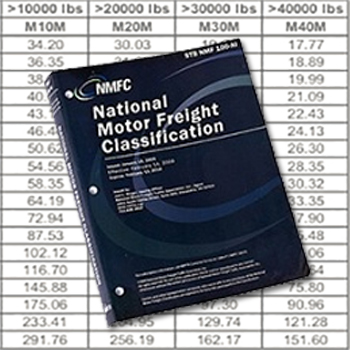Dimensional Rates and Breaking the National Motor Freight Classifications Paradigm

Both shippers and carriers need to re-engineer the pricing models used for the past 80 years - they need to establish new contracts that are dynamic, continuously reviewed, and encourage innovation.
The recent announcements byFedEx and other carriers of their intention to switch from a rating system based upon the antiquated National Motor Freight Classifications (NMFC) to a dimension based rate formula was not a surprise to industry insiders.
And while it was a bit of challenge for shippers and LTL carriers to start the revolution, this recent news should be seen as only a first step.
In previous columns, I’ve dared the carrier community to start the process of disaggregating the many factors that make up LTL classified rate tables. Now that the ball is starting to roll, it’s the shippers’ turn to respond with collaborative contracting model offerings in their next RFP.
The NMFC rates are an average of averages that include dimension, weight, value, insurance, and market factors like volume of the type of commodity. The focus on dimension now solves two key problems for the carriers.
First, it gets them out of the ridiculous position of offering 90 percent discounts off of ever increasing published rate tables. Second, it provides a rate table based on something shippers can manage. In fact, many leading shippers like Proctor and Gamble have demonstrated the savings that can be achieved by condensing product and packaging.
By breaking the NMFC paradigm, new opportunities present themselves on many levels:
Insurance: All rates have an insurance component. Find out if you are self insured or overinsured and ask for a discount value based on a lower release value.
Packaging: Work with your product management team on reducing dimension through product consolidation and package size reduction.
Optimize shipping days and times: Find out what day would be best for the carrier to move your loads. Ask for a rate discount for re-arranging scheduling to help fill trucks on “soft” days.
Fuel Costs: Fuel costs are regional. Understand where your local market rates are and how they are indexed.
Driver Hours of Service: What can you do to speed driver loading and unloading times? Discuss incentives for optimizing driver productivity.
Pool distribution: Have you looked at your network lately? Is there an opportunity for inbound or outbound pooling of loads? There are inexpensive web-based tools for modeling your orders and shipments, and we consistently see savings for shippers through a network optimization exercise.
Palletizing: As carriers change to dimensional/density rates, shippers need to negotiate the use of pallets and try new pallet configurations that will help consolidate and condense loads.
Collaboration: Instead of a standard RFP, try a collaborative conversation with existing carriers. They can save on sales costs in re-competing for your business, and, if they’re smart, will share innovations and ideas to help shippers meet their business goals.
- Upgrade your transportation management system (TMS): Make sure the shipper system can handle rates that are disaggregated and time sensitive. Can you handle real time quotes, day and time sensitive rates, accessorials and fuel hedging?
And finally, make sure that your carrier partner can handle the variables mentioned above and that their systems will support dynamic pricing under a contract. Can you both dump your subscriptions to expensive rate bureaus?
In the end, both shippers and carriers need to re-engineer the pricing models used for the past 80 years. They need to establish new contracts that are dynamic, continuously reviewed, and encourage innovation.
Some major carriers have thrown down the challenge and they’re focused on dimensions—and this assumes all other rate factors are average. Shippers need to use this opportunity to open the dialog and begin collaborating on multiple levels to optimize service and cost.
Related “Dimensional Pricing” Articles
- Reducing the Cost and Complexity of Dimensional-Weight Shipping Charges
- What Dimensional Price Increases Mean For Your Business
- How New Dimensional Weight Pricing Will Impact Ecommerce Shippers?
- Shippers Wait for Impact of FedEx Ground Pricing Changes and Next Move for UPS
- UPS Rolls Out Dimensional Pricing Changes Effective December 2014
- Dimensional Rates and Breaking the National Motor Freight Classifications Paradigm
- The Dimensional Price Increase: Did We Bring This on Ourselves?
Article Topics
Dynarates News & Resources
Can Dimensional Pricing Be The Financial Champion For The Less-than-Truckload Sector? Dimensional Rates and Breaking the National Motor Freight Classifications ParadigmLatest in Transportation
Baltimore Bridge Collapse: Impact on Freight Navigating Amazon Logistics’ Growth Shakes Up Shipping Industry in 2023 Nissan Channels Tesla With Its Latest Manufacturing Process Why are Diesel Prices Climbing Back Over $4 a Gallon? Luxury Car Brands in Limbo After Chinese Company Violates Labor Laws The Three Biggest Challenges Facing Shippers and Carriers in 2024 Supply Chain Stability Index: “Tremendous Improvement” in 2023 More Transportation











